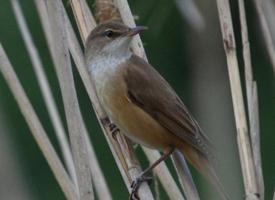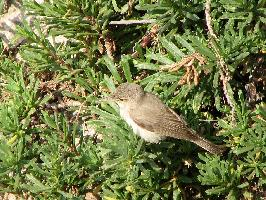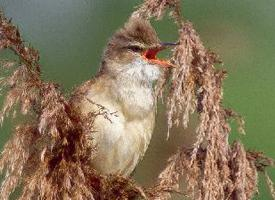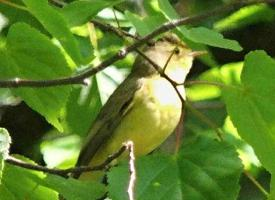
Stav ohrožení
| Ohrožen |
Popis zvířete
The Common Reed Warbler (Acrocephalus scirpaceus) is a small, inconspicuous bird, yet it plays a significant role in the ecosystems of wetlands across Europe, Africa, and western Asia. This species is part of the Acrocephalidae family, which is known for its members' distinctive body shapes and habitat preferences. The Common Reed Warbler, in particular, is a testament to the adaptability and resilience of avian species in diverse aquatic environments.Measuring about 12-14 cm in length and weighing between 8-15 grams, the Common Reed Warbler exhibits a rather modest appearance. Its plumage is primarily a subdued blend of browns and buffs, which serves as excellent camouflage against the reeds and rushes of its wetland habitat. The upper parts of its body are typically a warm brown, with a slightly paler underbelly. Its supercilium (eyebrow stripe) is faint but noticeable, contrasting with its darker crown and eye stripe. The bird's bill is straight and pointed, perfectly designed for catching insects, which constitute the majority of its diet.
One of the most fascinating aspects of the Common Reed Warbler is its song. Males are known for their long, complex, and variable songs, which they use to attract mates and defend their territories. These vocal performances are particularly impressive, given the bird's small size, and can be heard emanating from the reed beds throughout the breeding season. The song consists of a rapid series of melodious and scratchy notes, often incorporating mimicry of other bird species.
Breeding typically takes place between late April and July. The Common Reed Warbler is monogamous, and both parents are involved in raising the offspring. The nest, an impressive feat of avian architecture, is constructed by the female using reed stems and leaves. It is usually suspended between reeds or branches above water, providing protection from predators. The female lays 3-5 eggs, which are incubated for about 10-14 days. Once hatched, the chicks are fed by both parents and fledge after approximately 10-15 days, though they remain dependent on their parents for food for a few more weeks.
The Common Reed Warbler is a migratory bird, spending the breeding season in temperate regions of Europe and Asia and wintering in sub-Saharan Africa. This long-distance migration is a remarkable journey, showcasing the bird's endurance and navigational abilities.
Conservation-wise, the Common Reed Warbler is currently classified as Least Concern by the International Union for Conservation of Nature (IUCN), thanks to its wide distribution and large population. However, like many wetland species, it faces threats from habitat loss and degradation, particularly due to drainage, pollution, and the encroachment of human development. Conservation efforts aimed at preserving wetland habitats are crucial for ensuring the continued survival of the Common Reed Warbler and countless other species that rely on these ecosystems.
In summary, the Common Reed Warbler may not be the most visually striking bird, but its adaptability, fascinating behavioral traits, and the role it plays in wetland ecosystems make it a species of great interest and importance.
Podobná zvířata
Nové fotografie zvířat
Top 10 zvířat
- Chinese water dragon (Physignathus cocincinus)
- Galápagos tortoise (Geochelone nigra complex)
- Sea urchins (Echinoidea)
- Diana monkey (Cercopithecus diana)
- Dolphin gull (Leucophaeus scoresbii)
- Moustached guenon (Cercopithecus cephus)
- Japanese macaque (Macaca fuscata)
- Royal penguin (Eudyptes schlegeli)
- Hen harrier (Circus cyaneus)
- Barbary macaque (Macaca sylvanus)


